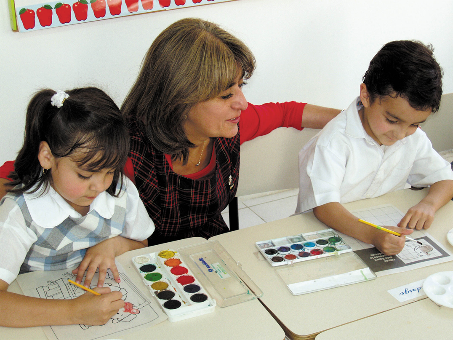Art and Design

Art and Design Intent Statement
Intent
At Tudor C of E Primary School, we aim to provide children with a high quality art and design education. We believe that our art curriculum should engage, inspire and challenge pupils, equipping them with the knowledge and skills to experiment, invent and create their own works of art, craft and design. We value the importance of children using visual language to express emotions, interpret observations, convey insights and accentuate their individuality. As they progress, pupils develop the ability to reflect on, analyse and critically evaluate their own work and that of others. Throughout the school, children are exposed to the works of great artists, locally and around the world. Artists studied link closely to learning in other subjects to enable children to know how art and design reflect and shape our history, contributing to the culture and creativity of our nation. Tudor Learning Characters are embedded throughout our Art and Design curriculum.
Try Hard – Developing the ability to explore, develop and deconstruct ideas through the use of sketchbooks. Reflecting on, analysing and critically evaluating their ideas to lead to improvement in their final product.
Understanding – Understanding the impact of famous works of art and their reflection of historical, cultural and global events.
Discover – Discovering and exploring a range of techniques to communicate visually. Drawing ideas and inspiration from observation, memory and imagination.
Openness – Developing the ability to select and use materials, processes and techniques skilfully and inventively to realise intentions and capitalise on the unexpected.
Reach out - Developing the ability to think and act like creative practitioners showing independence, initiative and originality to develop their creativity.
Implementation
We use Chris Quigley Essentials Curriculum to plan Art and Design. We ensure that the skills and knowledge that children will develop throughout each art topic are mapped across each year group and throughout the school to ensure progression. The emphasis on knowledge ensures that children understand the context of the artwork, as well as the artists that they are learning about and being inspired by. The curriculum exposes to children to a range of artists from around the world and from different eras. This enables links to other curriculum areas, including humanities, with children developing a considerable knowledge of individual artists as well as individual works and art movements. A similar focus on skills means that children are given opportunities to express their creative imagination, as well as practise and develop mastery in the key processes of art: drawing, painting, printing, textiles and sculpture.
Impact
Coordinated whole-school project work ensures that art is given high status in the curriculum and the school takes part in nationwide projects such as “Take One Picture” as well as local projects within the MAT, including the Diocesan Art Project.
The school’s art curriculum is supported through the availability of a wide range of quality resources, which are used to support children’s confidence in the use of different media.
The school environment celebrates children’s achievements in art and demonstrates the subject’s high status in the school. This also reflects the children’s sense of pride in their artwork and this is demonstrated by creative outcomes across the wider curriculum.